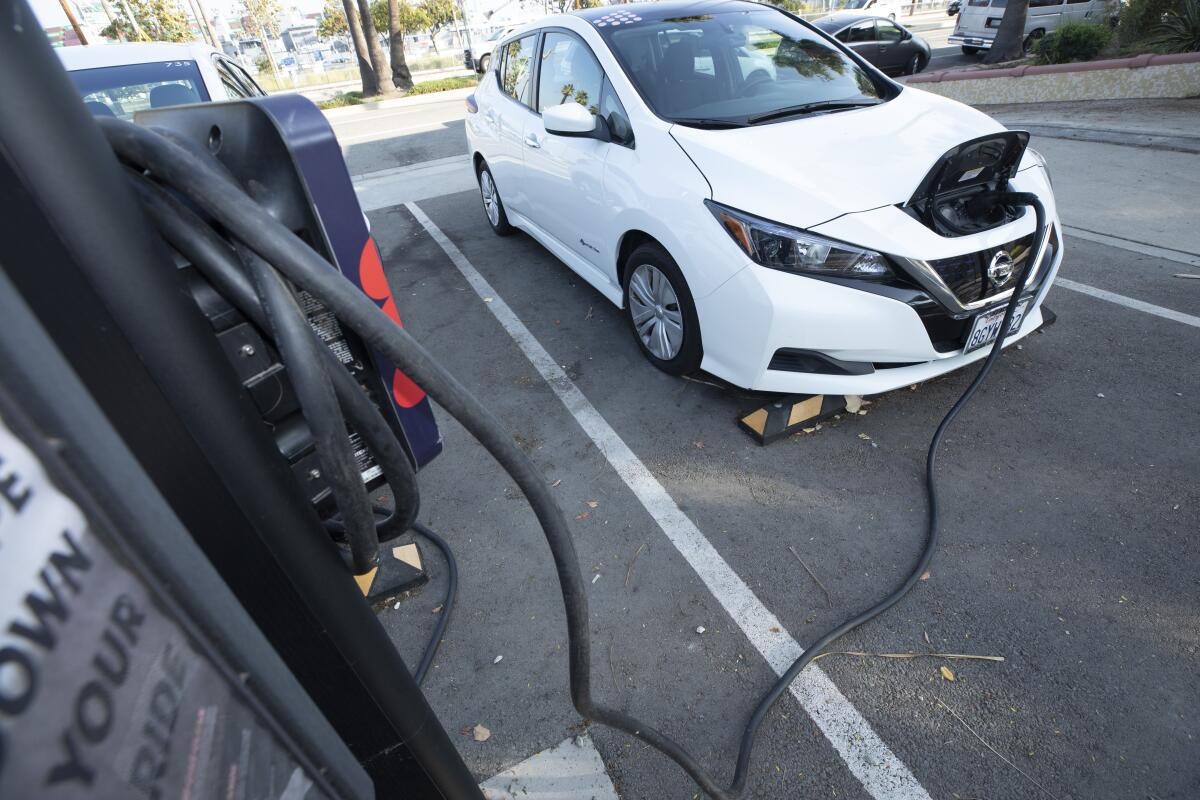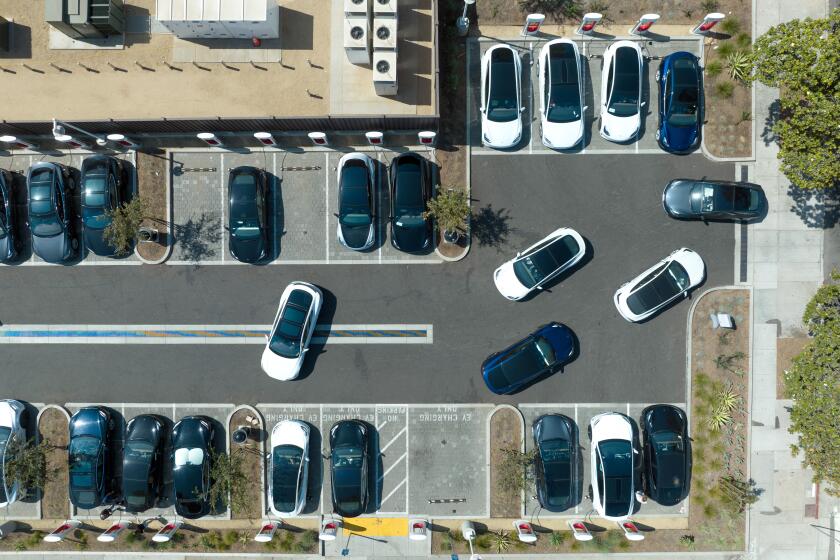California’s coming gas car ban: What it means

California is combating climate change and air pollution by cutting back on emissions from motor vehicles.
The California Air Resources Board voted Thursday to require all new passenger cars and light trucks sold by 2035 to be what it calls zero-emission vehicles. First proposed in April, the mandate will force automakers to phase out gasoline and diesel-powered vehicles in favor of cleaner battery or fuel-cell cars. The mission is to “[m]ove the state away from oil,” said Lauren Sanchez, Gov. Gavin Newsom’s climate advisor.
Here’s how it’s designed to work.
The timeline
In 2026, 35% of all new cars sold to California dealerships would need to be either battery-electric, plug-in hybrid or hydrogen-powered vehicles. That proportion will increase to 68% in 2030 before reaching 100% by 2035.
The air resources board says that will yield a reduction in greenhouse gas emissions from cars of more than 50% by 2040.
Plenty of challenges lie ahead as California mandates zero-emission cars, including cost and access to charging.
The enforcement mechanisms
If carmakers fail to meet mandated percentages between now and 2035, they could be fined $20,000 for each noncomplying vehicle short of the yearly target. They might be able to avoid such fines by buying credits from automakers that exceed their obligations. By 2035, however, all automakers must be at 100%.
Making EVs affordable
Electric vehicles are more expensive than their internal combustion engine counterparts: According to Kelley Blue Book, the average EV sold for $66,000 in July 2022, compared with $48,000 for the average nonelectric car.
The recently passed $369-billion climate package could help close that gap. It contains a significant increase in EV subsidies, including rebates of up to $7,500 and novel incentives for used cars. California’s Clean Vehicle Rebate Project also provides up to $7,000 for buyers of zero-emissions vehicles who fall under the income limit.
Building the infrastructure
Millions more EVs means a need for millions more chargers. The state plans to require multifamily housing landlords to provide a way to charge electric vehicles.
A federal infrastructure package passed last year included billions of dollars for installing chargers along interstate highways.
The gaps
Plug-in hybrids, which have internal combustion engines as well as battery motors, will still be allowed after 2035, but only if they’re capable of running at least 50 miles on batteries.
Owners of gas-powered cars can continue to drive them after 2035. And it will still be legal to buy and sell used fossil-fueled vehicles and light trucks.
Consumers will also potentially still be able to buy gas-powered cars from another state and register them in California, but officials believe surrounding states could enact their own, similar mandates.
Times staff writers Russ Mitchell and Tony Briscoe contributed to this report.
More to Read
Inside the business of entertainment
The Wide Shot brings you news, analysis and insights on everything from streaming wars to production — and what it all means for the future.
You may occasionally receive promotional content from the Los Angeles Times.












